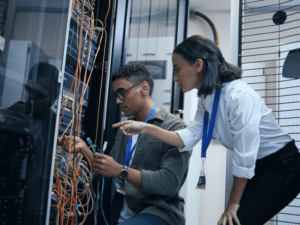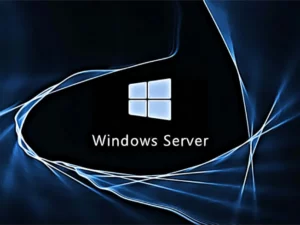EIGRP Practice Labs
- Description
- Curriculum
- Reviews
This hands-on lab course introduces EIGRP fundamentals and advanced features for the CCNA, CCNP, and CCIE certification exams. Students will configure and troubleshoot Classic EIGRP and Named EIGRP for IPv4 and IPv6 using EVE-NG, Packet Tracer or similar simulation tools. The labs cover EIGRP neighbor relationships, route summarization, filtering and authentication, providing practical experience in small to medium-sized networks. Through step-by-step exercises, learners will gain confidence in configuring and troubleshooting EIGRP routing protocol.
-
11.1 - Objectives and BackgroundText lesson
In this lab, you will configure and examine EIGRP in two forms, Classic EIGRP and Named EIGRP. Named EIGRP is an update to Classic EIGRP that added multiprotocol support and default support for wide metrics.
-
2Part 1: Configure Basic Device SettingsText lesson
In Part 1, you will set up the network topology and configure basic settings on routers.
-
3Part 2: Configure and Verify EIGRP for IPv4Text lesson
Configure EIGRP with Autonomous System 27. R1 and R3 use Named EIGRP; R2 uses Classic EIGRP.
-
4Part 3: Tune EIGRP for IPv4Text lesson
In this part of the lab, you will tune and optimize EIGRP for IPv4 through the use of passive interfaces, authentication, and variance.
-
52.1 Objectives and BackgroundText lesson
Customizing EIGRP operations can enhance network performance by speeding up convergence and stabilizing operations during outages. This lab explores advanced EIGRP techniques to optimize performance
in an enterprise network. -
6Part 1: Build the Network and Configure Basic Device SettingsText lesson
-
7Part 2: Implement EIGRP for IPv4Text lesson
-
8Part 3: Implement Advanced FeaturesText lesson
-
93.1 - Objectives and BackgroundText lesson
In this lab, you will configure the network with EIGRP for IPv6. You will also configure passive interfaces, propagate a default route, configure a summary route, implement routing protocol authentication, modify load balancing, and filter routes with a prefix list.
-
10Part 1: Build the Network and Configure Basic Device SettingsText lesson
In Part 1, you will set up the network topology and configure basic settings and interface addressing on routers.
-
11Part 2: Implement EIGRP for IPv6 and Named EIGRPText lesson
In this part of the lab, you will configure and verify EIGRP in the network. Routers R1 and R3 will used Named EIGRP, while router R2 will use Classic EIGRP. After you have established the network, you will examine the differences in how each version of EIGRP deals with metrics.
-
12Part 3: Tune and Optimize EIGRP for IPv6Text lesson
In this part of the lab, you will tune and optimize EIGRP for IPv6 through the use of passive interfaces, default router redistribution, summary routes, authentication, load balancing, and route filtering.

Duration: 10–20 hours, depending on the depth of the CCNP course module.
Format: Instructor-led, self-paced, or hybrid, using CML, GNS3, or physical Cisco routers.
Topics Covered:
Advanced EIGRP configuration (e.g., stub routing, route summarization, authentication).
EIGRP path selection and metric manipulation.
Route filtering using distribute lists and prefix lists.
Load balancing and unequal-cost load balancing.
Troubleshooting EIGRP in multi-area networks.
Tools: EVE-NG, Cisco Modeling Labs (CML), GNS3, or physical Cisco routers/switches.
Certification Alignment: Aligns with CCNP Enterprise core (ENCOR 350-401) and concentration (ENARSI 300-410) and CCIE exams, covering advanced routing and troubleshooting.
Network engineers or administrators pursuing CCNP Enterprise certification.
IT professionals with CCNA certification seeking to advance their routing and troubleshooting skills.
Professionals working in enterprise network environments requiring EIGRP expertise



